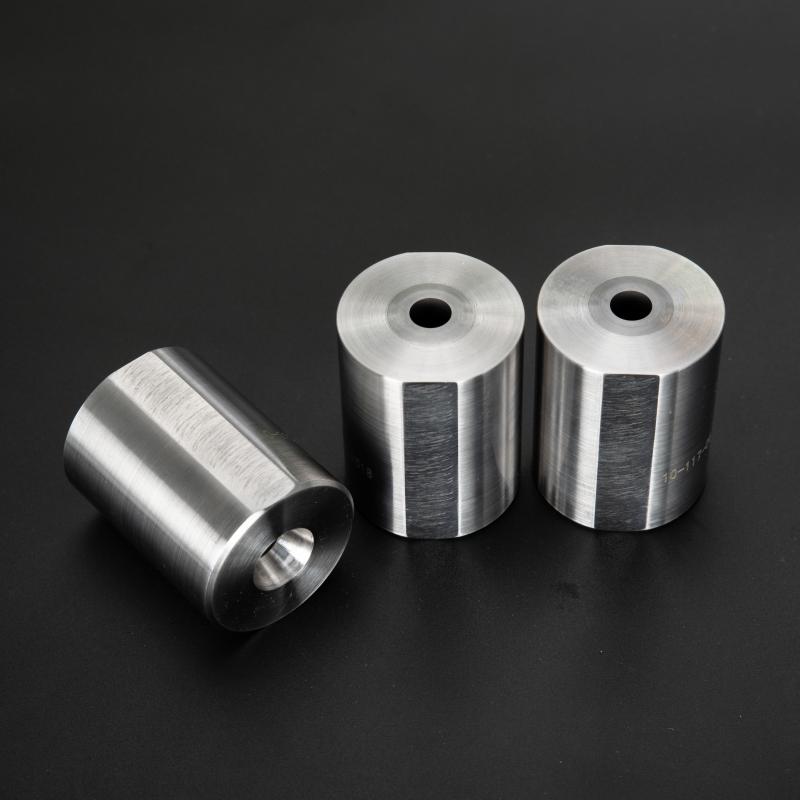Inner Cutting Dies are essential tools in various manufacturing processes, particularly in industries like packaging, automotive, textiles, and electronics. These dies are designed to perform precise cutting operations on a wide range of materials, and their longevity is critical to ensuring consistent product quality and operational efficiency. Proper maintenance and care are key factors in extending the lifespan of these tools while maintaining their optimal performance.

1. Regular Cleaning of Inner Cutting Dies
Regular cleaning is one of the most fundamental aspects of die maintenance. Dirt, debris, metal shavings, and other contaminants can accumulate on the surface of the die during the cutting process. If left unchecked, these contaminants can cause uneven cuts, increase wear and tear on the die, and even lead to malfunctions. Here's how to clean Inner Cutting Dies effectively:
Remove Residual Material: After each use, it is essential to remove any residual material left on the die. This includes scrap metal, dust, or leftover cutting debris.
Use Appropriate Cleaning Solutions: Choose cleaning solutions that are designed specifically for the material of the die. For example, mild detergents or degreasers can be used for steel dies, while specialized cleaners may be required for high-end materials such as Tungsten Carbide.
Soft Brushes and Cloths: Use soft brushes and lint-free cloths to clean delicate areas and avoid damaging the die’s surface. Avoid using abrasive materials that may scratch the die.
Ultrasonic Cleaning: For highly intricate dies, ultrasonic cleaning systems can be employed to remove contaminants from hard-to-reach areas without causing damage.
2. Lubrication to Reduce Friction and Wear
Lubrication plays a crucial role in maintaining the performance and longevity of inner cutting dies. During the cutting process, friction between the die and the material being cut can lead to heat generation, wear, and eventual breakdown of the die. Proper lubrication reduces friction and helps to maintain consistent cutting precision. Here are key tips for effective lubrication:
Choose the Right Lubricant: The type of lubricant you use will depend on the material of the die and the type of material being cut. It’s important to use lubricants that are compatible with both the die material and the material being processed.
Lubricate Regularly: Apply lubricant before every cutting session to reduce friction right from the start. In high-speed operations, it may be necessary to apply lubricant more frequently.
Apply a Thin, Even Layer: Over-lubrication can be as detrimental as insufficient lubrication. Apply a thin, even layer of lubricant to the die’s contact surfaces to ensure smooth operation without excessive buildup.
Use Automatic Lubrication Systems: In larger-scale operations, consider using automated lubrication systems that apply lubricant evenly and at consistent intervals, ensuring optimal protection throughout the cutting process.
3. Regular Inspection and Monitoring
Regular inspection of inner cutting dies is essential for detecting early signs of wear and damage. Monitoring the die’s condition allows for timely repairs or replacements, which can prevent costly downtime and the production of faulty products. Here are the key steps for effective inspection:
Visual Inspection: Perform a thorough visual inspection of the die after each use. Look for any signs of wear, cracks, or chips in the cutting edges. Check the overall condition of the die to ensure it is free from contamination or damage.
Check for Misalignment: Over time, dies can become misaligned due to continuous use or external forces. Misalignment can result in uneven cuts or poor-quality products. Ensure that the die is properly aligned with the machine before each use.
Examine the Cutting Edges: Pay special attention to the cutting edges of the die. These areas are most susceptible to wear and tear. If the edges show signs of dullness or chipping, it may be time for sharpening or reconditioning.
Measure Die Performance: Using specialized equipment, measure the performance of the die, such as the precision of cuts or the level of force required during the cutting process. If performance starts to decline, it may indicate that the die needs attention.
Professional Inspection: In addition to routine inspections, consider scheduling periodic professional inspections by an experienced technician. They can check for issues that may not be visible to the naked eye and recommend any necessary adjustments or repairs.
4. Reconditioning and Sharpening
As inner cutting dies undergo regular use, their cutting edges can wear down, affecting the precision and efficiency of the cuts. Reconditioning and sharpening are vital for maintaining die performance and extending its useful life. Here’s how to go about it:
Reconditioning the Die: Reconditioning involves restoring the die’s cutting surfaces to their original condition. This may include grinding, polishing, or replacing worn-out components. Reconditioning extends the lifespan of the die and ensures that it continues to function effectively.
Sharpening the Edges: Over time, the cutting edges of the die can become dull. When this happens, the die will require more force to cut through materials, leading to higher friction and wear. Regular sharpening can help maintain optimal performance and prevent unnecessary damage to the die and materials.
5. Proper Storage of Inner Cutting Dies
Proper storage is essential to prevent unnecessary damage or degradation of inner cutting dies when not in use. Improper storage can lead to rusting, corrosion, or warping of the die. Here’s how to store your dies effectively:
Store in a Dry, Clean Environment: Store dies in a clean, dry environment to prevent rust and corrosion. Humidity and moisture can cause rust to form on the die’s surface, compromising its cutting capabilities.
Use Protective Covers: Use protective covers or cases to shield the die from dust, moisture, and potential physical damage. A protective cover can also prevent accidental contact with other materials that could cause scratches or dents.
Avoid Stacking or Dropping: Never stack dies on top of each other or drop them, as this can cause deformation or damage to the cutting surfaces.
Maintaining inner cutting dies is essential for ensuring their longevity, performance, and consistent results. By following the best practices of regular cleaning, lubrication, inspection, reconditioning, and proper storage, manufacturers can significantly extend the lifespan of their dies and improve operational efficiency. Proactive care and attention to detail not only reduce the need for costly replacements but also enhance the quality of the products being manufactured. Investing in the maintenance of inner cutting dies is a smart way to reduce downtime, improve product consistency, and ensure the continued success of the manufacturing process.











